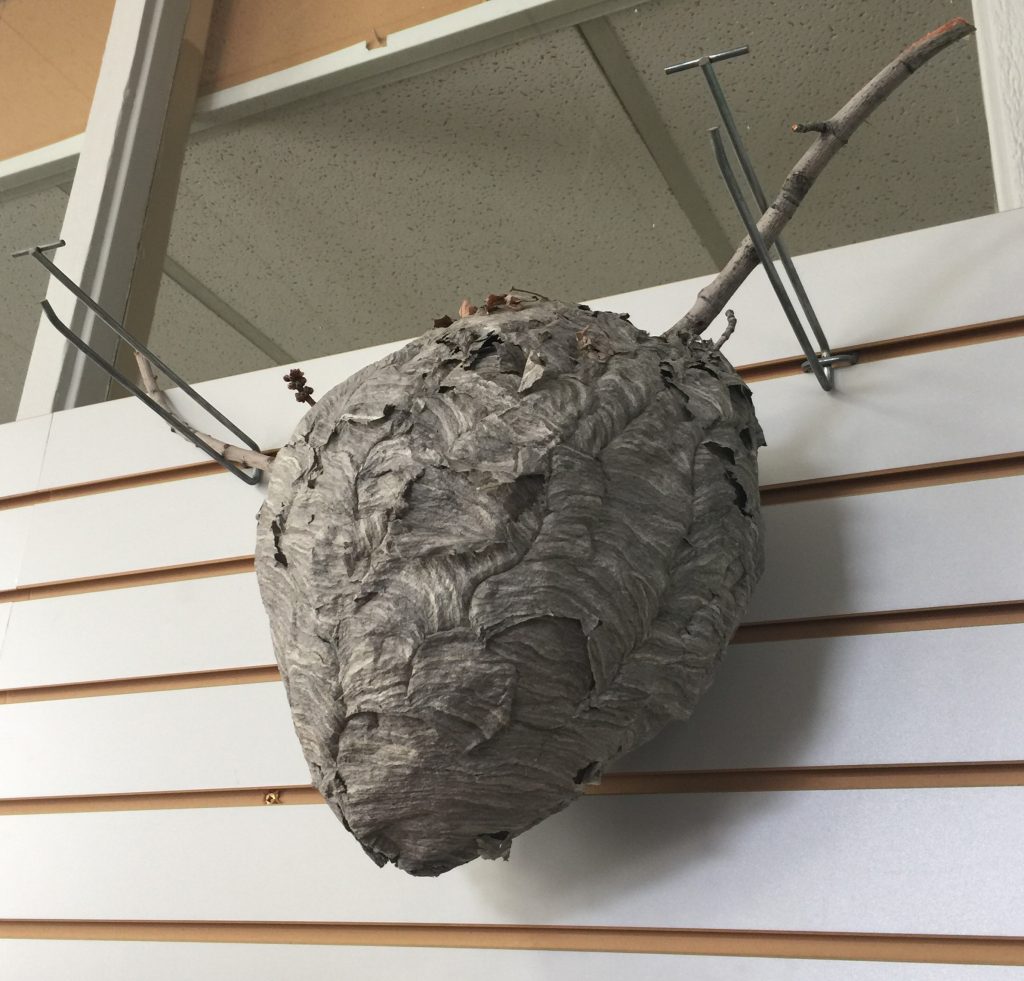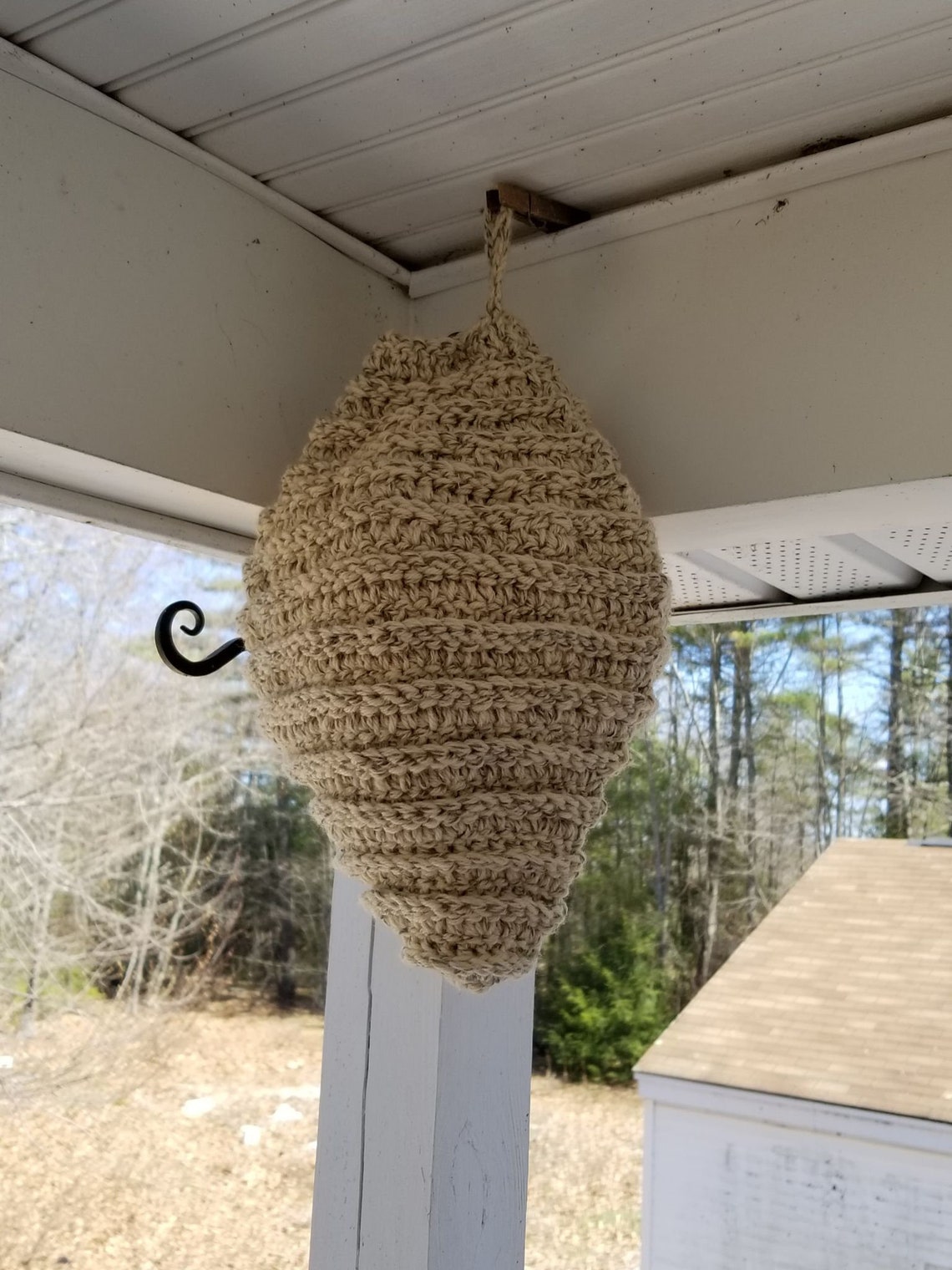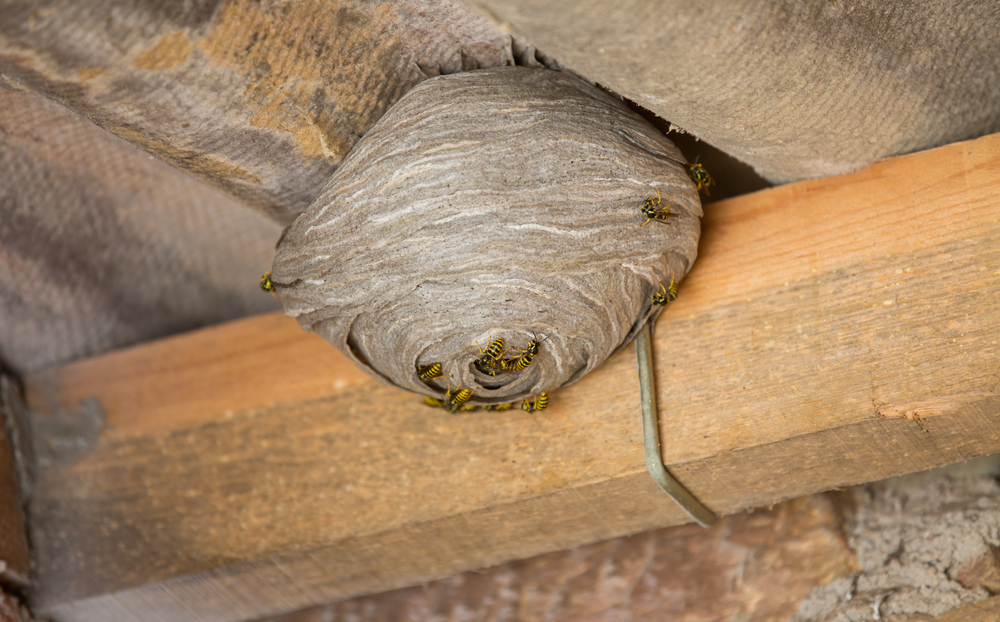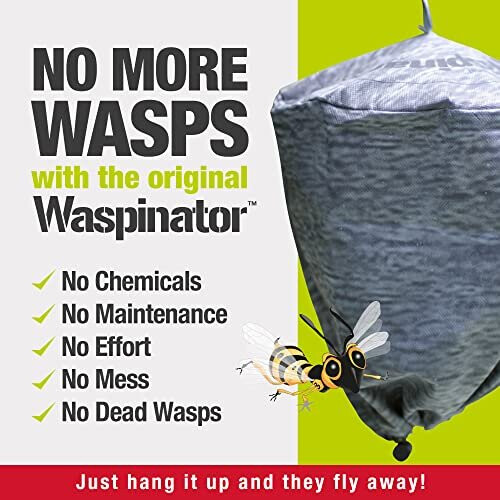Why Wasps are Attracted to Your Yard
Wasps are attracted to outdoor spaces for various reasons, including the presence of food sources, sweet-tasting substances, and potential nesting sites. These insects are naturally drawn to areas with an abundance of food, such as sugary drinks, fruits, and insects. Additionally, wasps are attracted to sweet-tasting substances like nectar, soda, and perfume. They also seek out areas with suitable nesting sites, such as eaves, attics, and wall voids. Understanding these attractants is crucial in developing effective wasp deterrent strategies, including the use of fake wasp nests to deter wasps.
Wasps are also attracted to areas with standing water, such as pet water dishes, bird baths, and clogged drains. They need water to drink and to cool their bodies, making these areas ideal for wasp activity. Furthermore, wasps are drawn to areas with an abundance of insects, such as aphids, whiteflies, and spiders. These insects serve as a food source for wasps, making areas with high insect activity more attractive to these pests.
By understanding the reasons why wasps are attracted to outdoor spaces, homeowners can take steps to prevent infestations and reduce the risk of wasp stings. One effective method for deterring wasps is the use of fake wasp nests, which can be created using materials like paper, foam, or plastic. These nests mimic the appearance of real wasp nests, making them an effective deterrent for wasps. By combining fake wasp nests with other deterrents, such as sealing entry points and removing food sources, homeowners can create a comprehensive wasp control plan that keeps their outdoor spaces safe and wasp-free.
How to Create a Fake Wasp Nest to Deter Wasps
Creating a fake wasp nest is a simple and effective way to deter wasps from your outdoor space. To start, you’ll need a few basic materials, such as paper, foam, or plastic. You can use a paper lantern or a foam ball as the base of the nest, or create a more elaborate structure using plastic or cardboard.
Once you have your materials, follow these steps to create a fake wasp nest:
1. Choose a location for the nest that is visible to wasps, such as a corner of a patio or a spot near a food source. Wasps are more likely to be deterred by a nest that is in plain sight.
2. Create the nest structure using your chosen materials. You can use glue, tape, or staples to hold the nest together.
3. Add some texture and detail to the nest to make it look more realistic. You can use paint, markers, or even add some fake wasp eggs or larvae to the nest.
4. Hang the nest in the chosen location, making sure it is secure and won’t fall or blow away in the wind.
5. Maintain the nest regularly to keep it looking realistic and effective. You can add some new details or texture to the nest every few weeks to keep it looking fresh.
By following these steps, you can create a fake wasp nest that will effectively deter wasps from your outdoor space. Remember to place the nest in a visible location and maintain it regularly to keep it looking realistic and effective.
Using a fake wasp nest to deter wasps is a natural and non-toxic method that can be used in conjunction with other deterrents, such as sealing entry points and removing food sources. By combining these methods, you can create a comprehensive wasp control plan that keeps your outdoor space safe and wasp-free.
The Science Behind Fake Wasp Nests
Wasps are highly territorial and social creatures that live in colonies with a strict caste system. They are also known for their aggressive behavior when defending their nests and territories. This is why fake wasp nests can be an effective deterrent for keeping wasps away.
When a wasp encounters a fake nest, it perceives it as a threat to its own colony and territory. Wasps are able to recognize the shape, size, and color of their own nests, and they will often avoid areas where they detect the presence of another nest. By placing a fake nest in a visible location, you can create the illusion of an existing wasp colony, which will deter other wasps from approaching the area.
The science behind fake wasp nests is based on the concept of territoriality and the wasp’s natural instinct to defend its territory. Wasps are able to communicate with each other through complex chemical signals, known as pheromones, which allow them to mark their territory and warn other wasps of potential threats. By mimicking the appearance of a real wasp nest, a fake nest can trigger this territorial response and keep wasps away.
Studies have shown that fake wasp nests can be an effective deterrent for keeping wasps away from outdoor spaces. In one study, researchers found that fake nests reduced wasp activity by up to 70% in areas where they were installed. Another study found that fake nests were more effective than other deterrents, such as citronella candles and essential oils, in keeping wasps away.
Overall, the science behind fake wasp nests is based on the wasp’s natural behavior and territorial instincts. By understanding how wasps perceive and respond to their environment, we can create effective deterrents that keep them away from our outdoor spaces.
Alternative Wasp Deterrents: Do They Really Work?
In addition to fake wasp nests, there are several other common wasp deterrents that people use to keep wasps away from their outdoor spaces. Some of these deterrents include citronella candles, essential oils, and ultrasonic devices. But do they really work?
Citronella candles are a popular wasp deterrent that are often used in outdoor spaces. These candles contain citronella oil, which is a natural insect repellent. However, studies have shown that citronella candles are not very effective at keeping wasps away. In fact, one study found that citronella candles only reduced wasp activity by 10%.
Essential oils, such as peppermint and lemongrass, are also often used as wasp deterrents. These oils can be applied to surfaces or used in a diffuser to repel wasps. However, the effectiveness of essential oils as wasp deterrents is largely anecdotal, and there is limited scientific evidence to support their use.
Ultrasonic devices are another type of wasp deterrent that are often used. These devices emit a high-frequency sound that is undetectable to humans but unpleasant for wasps. However, studies have shown that ultrasonic devices are not very effective at keeping wasps away. In fact, one study found that ultrasonic devices only reduced wasp activity by 5%.
So, what can you use in conjunction with fake wasp nests to keep wasps away? One effective option is to seal entry points and remove food sources. Wasps are attracted to sweet-tasting substances and protein-rich foods, so removing these sources can help to deter them. You can also use wasp traps, which are designed to capture and kill wasps. By combining these methods with fake wasp nests, you can create a comprehensive wasp control plan that keeps your outdoor space safe and wasp-free.
Real-Life Examples: Success Stories with Fake Wasp Nests
Many people have successfully used fake wasp nests to deter wasps from their outdoor spaces. Here are a few examples of success stories:
One homeowner in California used a fake wasp nest to keep wasps away from her patio. She placed the nest in a visible location and maintained it regularly. As a result, she saw a significant reduction in wasp activity and was able to enjoy her outdoor space without worrying about wasp stings.
A restaurant owner in New York used fake wasp nests to keep wasps away from his outdoor seating area. He placed several nests around the perimeter of the seating area and saw a significant reduction in wasp activity. As a result, he was able to increase customer satisfaction and reduce the risk of wasp stings.
A family in Florida used fake wasp nests to keep wasps away from their backyard pool area. They placed several nests around the pool area and maintained them regularly. As a result, they saw a significant reduction in wasp activity and were able to enjoy their pool without worrying about wasp stings.
These success stories demonstrate the effectiveness of fake wasp nests in deterring wasps from outdoor spaces. By using fake wasp nests in conjunction with other deterrents, such as sealing entry points and removing food sources, you can create a comprehensive wasp control plan that keeps your outdoor space safe and wasp-free.
It’s worth noting that fake wasp nests can be used in a variety of settings, including residential, commercial, and recreational areas. They are a natural and non-toxic method for deterring wasps, and they can be used in conjunction with other deterrents to create a comprehensive wasp control plan.
Common Mistakes to Avoid When Using Fake Wasp Nests
While fake wasp nests can be an effective way to deter wasps from your outdoor space, there are some common mistakes to avoid when using them. Here are a few things to keep in mind:
One common mistake is placing the fake wasp nest too close to food sources. Wasps are attracted to sweet-tasting substances and protein-rich foods, so placing the nest near these sources can actually attract more wasps to the area. Instead, place the nest in a location that is visible to wasps but not near food sources.
Another mistake is not maintaining the fake wasp nest properly. Wasps can become accustomed to the nest over time, so it’s essential to regularly clean and maintain the nest to keep it looking realistic. This can include adding new details or texture to the nest, or replacing it altogether if it becomes worn or damaged.
Additionally, some people make the mistake of using fake wasp nests that are too small or too large for the area they are trying to protect. A nest that is too small may not be visible to wasps, while a nest that is too large may be seen as a threat and actually attract more wasps to the area. Instead, choose a nest that is proportional to the size of the area you are trying to protect.
Finally, some people may make the mistake of using fake wasp nests in conjunction with other deterrents that are not effective. For example, using citronella candles or essential oils in conjunction with fake wasp nests may not be effective, as these deterrents may not be strong enough to keep wasps away. Instead, use fake wasp nests in conjunction with other effective deterrents, such as sealing entry points and removing food sources.
By avoiding these common mistakes, you can use fake wasp nests effectively to keep wasps away from your outdoor space. Remember to place the nest in a visible location, maintain it regularly, and use it in conjunction with other effective deterrents.
Combining Fake Wasp Nests with Other Deterrents for Maximum Effect
While fake wasp nests can be an effective way to deter wasps from your outdoor space, they can be even more effective when combined with other deterrents. Here are a few ways to combine fake wasp nests with other deterrents for maximum effect:
One way to combine fake wasp nests with other deterrents is to seal entry points around your home or outdoor space. Wasps can enter your home or outdoor space through even the smallest openings, so sealing these entry points can help to prevent them from getting inside. Use caulk or weatherstripping to seal any gaps or cracks around windows, doors, and other openings.
Another way to combine fake wasp nests with other deterrents is to remove food sources from your outdoor space. Wasps are attracted to sweet-tasting substances and protein-rich foods, so removing these sources can help to deter them from your outdoor space. Keep your outdoor space clean and free of debris, and avoid leaving food or drinks outside.
You can also combine fake wasp nests with wasp traps for maximum effect. Wasp traps can be used to capture and kill wasps that are already present in your outdoor space, while fake wasp nests can be used to deter new wasps from entering the area. Use a combination of fake wasp nests and wasp traps to create a comprehensive wasp control plan.
Finally, you can combine fake wasp nests with other natural deterrents, such as mint or lemongrass, for maximum effect. These natural deterrents can be used to repel wasps from your outdoor space, while fake wasp nests can be used to deter them from entering the area. Use a combination of fake wasp nests and natural deterrents to create a comprehensive wasp control plan.
By combining fake wasp nests with other deterrents, you can create a comprehensive wasp control plan that keeps your outdoor space safe and wasp-free. Remember to always follow the manufacturer’s instructions when using any deterrents, and take steps to prevent wasps from entering your home or outdoor space.
Conclusion: Keeping Your Outdoor Space Wasp-Free
In conclusion, fake wasp nests are a natural and effective way to deter wasps from your outdoor space. By understanding why wasps are attracted to your yard and using a combination of fake wasp nests and other deterrents, you can create a comprehensive wasp control plan that keeps your outdoor space safe and wasp-free.
Remember to always follow the manufacturer’s instructions when using any deterrents, and take steps to prevent wasps from entering your home or outdoor space. By being proactive and taking the necessary steps to deter wasps, you can enjoy your outdoor space without the fear of wasp stings.
Fake wasp nests are a simple and effective solution for keeping wasps away from your outdoor space. They are easy to create and maintain, and can be used in conjunction with other deterrents for maximum effect. By using fake wasp nests as part of a comprehensive wasp control plan, you can keep your outdoor space safe and wasp-free.
Don’t let wasps ruin your outdoor space. Try using fake wasp nests today and see the difference for yourself. With their natural and non-toxic ingredients, fake wasp nests are a safe and effective way to keep wasps away from your outdoor space.
By following the tips and advice outlined in this article, you can create a comprehensive wasp control plan that keeps your outdoor space safe and wasp-free. Remember to always be proactive and take the necessary steps to prevent wasps from entering your home or outdoor space.







